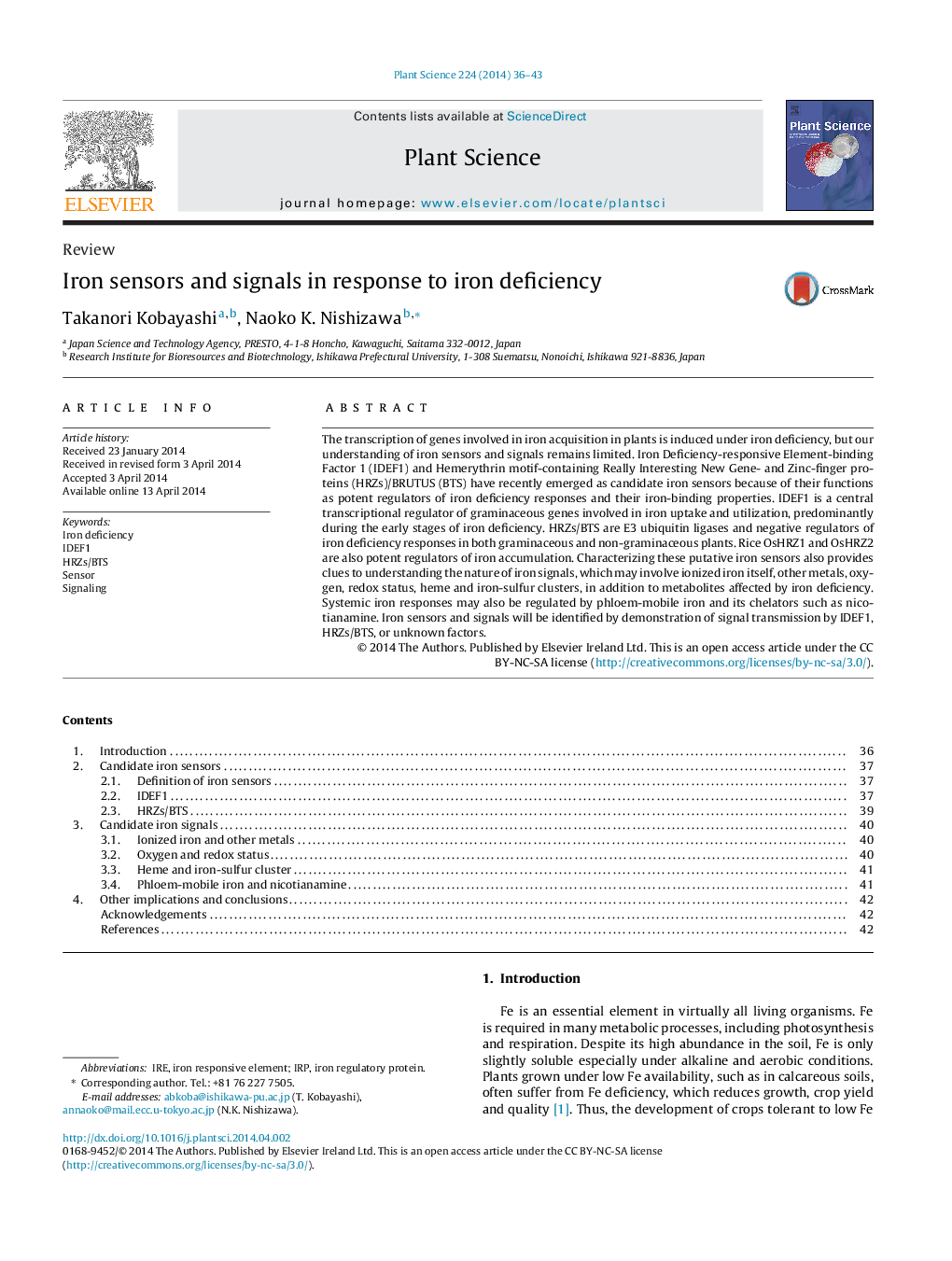| Article ID | Journal | Published Year | Pages | File Type |
|---|---|---|---|---|
| 8358258 | Plant Science | 2014 | 8 Pages |
Abstract
The transcription of genes involved in iron acquisition in plants is induced under iron deficiency, but our understanding of iron sensors and signals remains limited. Iron Deficiency-responsive Element-binding Factor 1 (IDEF1) and Hemerythrin motif-containing Really Interesting New Gene- and Zinc-finger proteins (HRZs)/BRUTUS (BTS) have recently emerged as candidate iron sensors because of their functions as potent regulators of iron deficiency responses and their iron-binding properties. IDEF1 is a central transcriptional regulator of graminaceous genes involved in iron uptake and utilization, predominantly during the early stages of iron deficiency. HRZs/BTS are E3 ubiquitin ligases and negative regulators of iron deficiency responses in both graminaceous and non-graminaceous plants. Rice OsHRZ1 and OsHRZ2 are also potent regulators of iron accumulation. Characterizing these putative iron sensors also provides clues to understanding the nature of iron signals, which may involve ionized iron itself, other metals, oxygen, redox status, heme and iron-sulfur clusters, in addition to metabolites affected by iron deficiency. Systemic iron responses may also be regulated by phloem-mobile iron and its chelators such as nicotianamine. Iron sensors and signals will be identified by demonstration of signal transmission by IDEF1, HRZs/BTS, or unknown factors.
Related Topics
Life Sciences
Agricultural and Biological Sciences
Plant Science
Authors
Takanori Kobayashi, Naoko K. Nishizawa,
